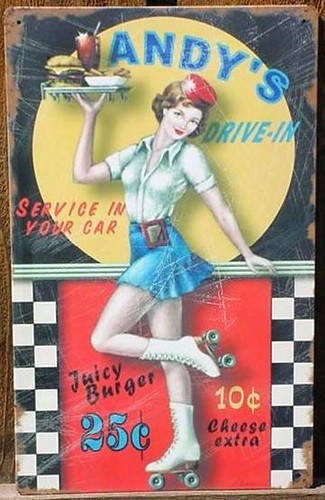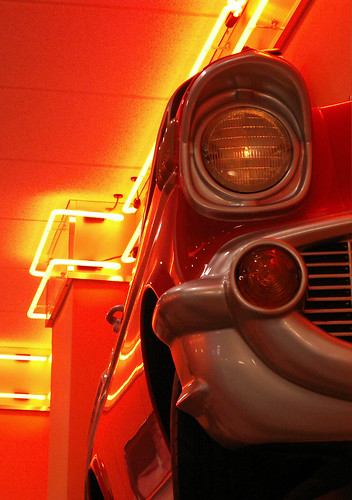VOLKSWAGEN: Far Out Fahrvergnügen
By: Mike Marino

Before there were Beatles...there were Beetles!
In the tie-dyed Sixties, all roads led to San Francisco and The Summer of Love in Haight Ashbury. The ragtag rucksack army with flowers in their hair, came from the entire social spectrum of America laden with backpacks, grungy Levi's and spare change in their pockets hitching rides across the continent. LSD was the mind altering vehicle of choice for chemical exploration, but the venerable VW microbus was the automotive vehicle of choice on those long strange trips to the far out West Coast. I have a special fondness for this peculiar icon as I was living in San Franisco at the time and had the good fortune as well as a good friend who owned a Dub that became mobile home away from home as we took off one morning from Berkeley on a two month long journey down the coast of California, into Death Valley, across the southwest of Arizona and New Mexico and south of the border into Pancho Villa's Old Mexico. That microbus was home, transport and our personal Yellow Submarine.

The Beetle and the Bus hold a unique place perched high on the pedestal of pop culture, unfortunately Walt Disney's lovable, huggable Herbie the Love Bug has ominous geneology in that it was concieved under the goosestep of the not so lovable Third Reich. The VW story begins, sort of, in 1923 when Adolph Hitler was jailed in Munich for trying to overthrow the local government. While incarcerated he had plenty of time on his hands to write and to read. As he wrote Mein Kampf, he also studied biographies. One of them that loomed larger than life was that of American industrialist, Henry Ford, the maestro of mass production. The rate that autos rolled out of the factories and filled the highways dazzled Hitler's imagination. The Model T, the car of the people, was of particular interest to him. Affordable, plentiful and available in any color as long as it was black, so said the ad brochures in an attempt of Motor City whimsy. Hitler felt the German people too, deserved such an affordable conveyance and during his prison stay he went from Mein Kampt to Mein Ford in under 60 seconds!
Released from prison, Hitler managed to gain total control over Germany by 1933 and in the process became the real life Darth Vader of the 20th Century. One of his first projects was announced in 1934, the production of the first "peoples car" or "volkswagen" that would inject a little fahrvergnügen zest and zing into the German populace. The strange looking, at the time, car-child finally rolled off the assemblylines in 1935. In 1937 the "Gesellschaft zur Vorbereitung des Deutschen Volkswagens mbH" company is founded, and by 1938 it is mercifully shortened and renamed "Volkswagenwerk GmbH". Not only easier to pronounce but would fit on a business card more readily too. Flashback: Wolfsburg - 1938!
Construction begins on the new Volkswagenwerk plant devoted solely to production of the Volkswagen which was designed by no less than Ferdinand Porsche, with his flair for design and Porsce panache.
The first two prototypes that rolled off that assembly line had the ominous designation of V-1 and V-2 which later in the war would be the designated names of the of the deadly rockets that would rain down on England bringing with them a hailstorm of fire and metal.
The war was fulltilt boogie by 1939 and Volkswagen production was put on hold in favor of prodution of the machinery of war. Planes and Panzers to feed the Reichs insatiable appetite for conquest. Soon, Hitler bunkered out as the Allies closed in on all sides and soon the carnage stopped and the victorious allies divided up what pie was left of Germany. Divided by the US, the Soviet Union, France and Britain it was the United Kingdom that inherited the sector that contained the old VW production plant. After the end of the Second World War, in 1945, responsibility for Volkswagenwerk is placed in the hands of the British Military Government and mass production of the Volkswagen Beetle is started and ultimately would crank out the machine that would gain a popularity and sales growth that would outdo the sales figures of Ford's Model T. The Volkswagen had come of age with a new lease on life from the ruins of war.
VW dealerships were limited at the time but a Dutch dealer sent a diagram of a new design concept to Wolfsburg outling and truck and bus combo that was ultimately designated the Type 2 Transporter. It was prototyped and introduced at the Geneva Motor Show in 1949. The Volkswagen Bus, or V-Dub, known to many as the "VW Bully", soon creates rising demand thanks to its multifunctional capabilities. In 1956 a separate manufacturing base for the Transporter is established in Hanover.
Somewhere along the line, VW was visited by a cosmic fairy godmother who sprinkled it with liberal doses of pixie dust and with a wave of the wand became the darling of the Sixties Generation. Ironically this machine that had it's roots in an enviroment hell bent on war and destruction became the ultimate symbol later in life of Flower Power and Peace.It was a camper, it was a home and offered mobile living for a restless generation. The 'bug" and the "bus" ruled the psychedelic highways of the Sities They could be found exploring the West Coast and the southwest and found in cities across America from The East Village in NYC to Haight Ashbury in San Francisco. Eventually Walt Disney would launch Herbie the Love Bug onto the big screen and into our hearts, thus ensuring a lasting place in pop culture and establish it as an icon in the annals of automotive history and at long last fahrvergnügen was far out!


Classic Cars, Rock n' Roll, Elvis, Drivein Movies & Route 66! Kerouac, The Beats, Haight Ashbury, Easy Rider & Vietnam!

The Roadhead Chronicles goes from the Cold War Fifties Pop Culture of classic cars and rock n' roll to the spaced out Spare Change Sixties of Vietnam and Hells Angels. Not the usual look at the era, instead It's written by someone who lived it and spent a life of being on the road from his beach bum days in Honolulu to the glitz and dangers of the Sunset Strip in LA, and his purple hazed and double dazed days in North Beach and the Haight Ashbury in San Francisco. The Roadhead Chronicles also looks at the history of Route 66, Roadside Neon Culture and old diners and dives!

Mike Marino writes in an offbeat and irreverant style with a beat and a cadence that is all his own. His writing style has been compared to John Dos Passos, John Steinbeck and Terry Southern and one reviewer likened him to Frederick Lewis Allen on acid! Readers and critics call the book "wickedly wonderful", "delightfully weird" and "automotively sexy."!!
